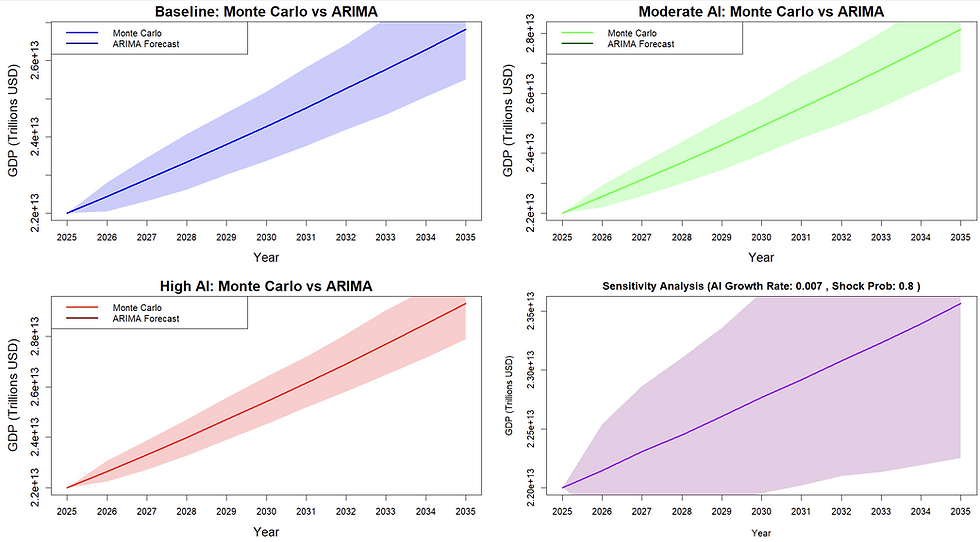Estimating Impact of Tariffs on Prices and Wages: Application of RAG Extraction and LLM-Assisted Model Generation (with robust validation)
- Amir Bagherpour

- Mar 12
- 2 min read
Built a flexible model to estimate the impact of tariffs on prices and wages, adaptable to any dataset or industry. We have been refining this approach for wide applications and repeatable workflows. This example is on tariffs, but the same approach can be used for estimating & detecting fraud, price optimization, supply chain optimization, and many other public and private sector applications. The workflow—informed by established approaches from peer-reviewed literature and quant techniques—includes: 1) RAG extraction of insights, 2) data ingestion and cleaning, 3) LLM-assisted model generation (with robust validation), 4) foundational parameter testing, and 5) insight articulation. This approach will yield significant productivity compared to traditional approach to building models and estimating impact.
Effective application hinges on problem conceptualization and rigorous model/data testing. Visualization is key, but it's tip of the iceberg. Deep value is based on better models and better data.
In this example, a model from one of the most cited peer reviewed publications is applied (cited 1094 times): The Impact of the 2018 Tariffs on Prices and Welfare by Amiti, Redding and Weinstein The Impact of the 2018 Tariffs on Prices and Welfare
Model results are counterintuitive. As evident by density graphs and box plots, there is a widening range of possible wage outcomes with higher tariffs. While a naive view might expect uniformly suppressed wages, the model suggests some sectors could see wage increases due to factors like reduced foreign competition, reciprocal trade dynamics, and industry-specific impacts. This increased dispersion of potential wage outcomes is the key counterintuitive element.
Applying to econometric model to estimate 15%, 20%, and 25% tariff impacts reveals:
*Price Adjustments: Higher tariffs correlate with upward pressure on prices.
*Wage Adaptability: Wage impacts are complex, showing increased adaptability at higher tariffs. The boxplot shows a widening range of potential wage adjustments, reflecting diverse industry strategies. Outliers highlight the potential for significant wage shifts.
*Strategic Response: This model anticipates industry responses, empowering proactive decision-making.
Understanding these impacts allows for informed decisions on pricing, workforce planning, and strategy. It's all about combining the wisdom of established approaches with the power of new innovations.
Distribution of Wage Changes by Tariff Level

Impact on Tariffs -- Density Plot Results



Comments